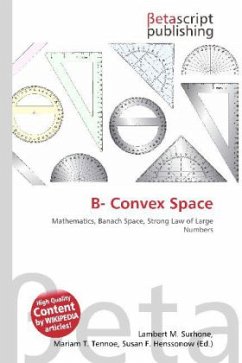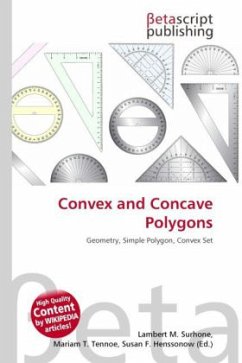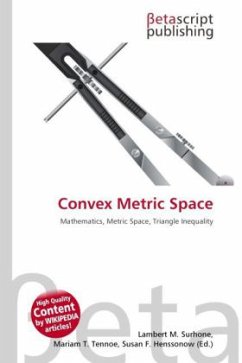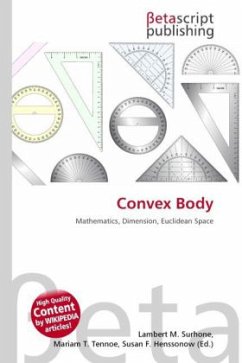
Orthogonal Convex Hull
Versandkostenfrei!
Versandfertig in 6-10 Tagen
23,99 €
inkl. MwSt.

PAYBACK Punkte
12 °P sammeln!
Please note that the content of this book primarily consists of articles available from Wikipedia or other free sources online. In Euclidean geometry, a set KsubsetR^n is defined to be orthogonally convex if, for every line L that is parallel to one of the axes of the Cartesian coordinate system, the intersection of K with L is empty, a point, or a single interval. Unlike ordinary convex sets, an orthogonally convex set is not necessarily connected. The orthogonal convex hull of a set SsubsetR^n is the intersection of all connected orthogonally convex supersets of S. These definitions are made...
Please note that the content of this book primarily consists of articles available from Wikipedia or other free sources online. In Euclidean geometry, a set KsubsetR^n is defined to be orthogonally convex if, for every line L that is parallel to one of the axes of the Cartesian coordinate system, the intersection of K with L is empty, a point, or a single interval. Unlike ordinary convex sets, an orthogonally convex set is not necessarily connected. The orthogonal convex hull of a set SsubsetR^n is the intersection of all connected orthogonally convex supersets of S. These definitions are made by analogy with the classical theory of convexity, in which K is convex if, for every line L, the intersection of K with L is empty, a point, or a single interval. Orthogonal convexity restricts the lines for which this property is required to hold, so every convex set is orthogonally convex but not vice versa.












